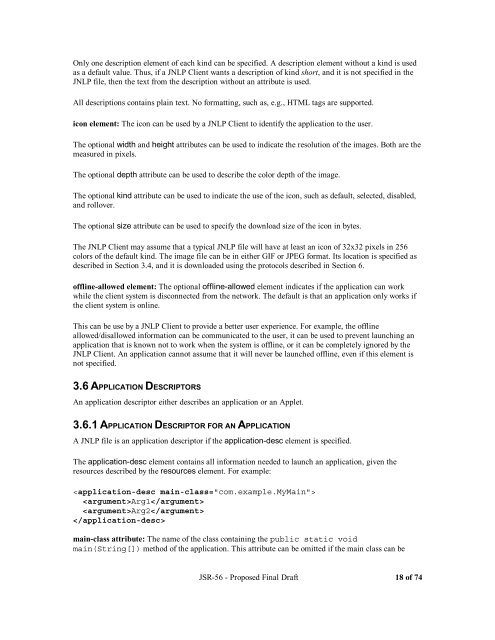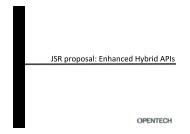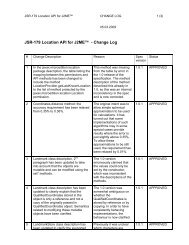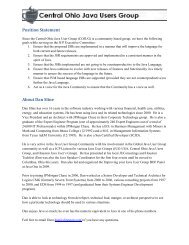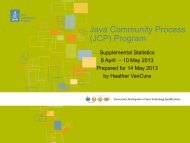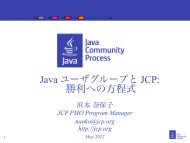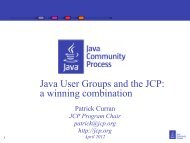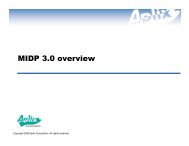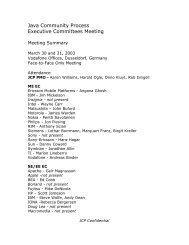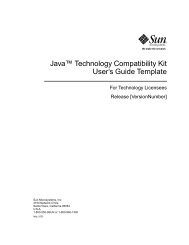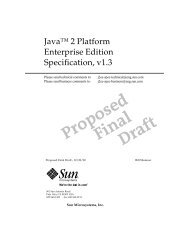jsr-56 - Java Community Process Program
jsr-56 - Java Community Process Program
jsr-56 - Java Community Process Program
Create successful ePaper yourself
Turn your PDF publications into a flip-book with our unique Google optimized e-Paper software.
Only one description element of each kind can be specified. A description element without a kind is used<br />
as a default value. Thus, if a JNLP Client wants a description of kind short, and it is not specified in the<br />
JNLP file, then the text from the description without an attribute is used.<br />
All descriptions contains plain text. No formatting, such as, e.g., HTML tags are supported.<br />
icon element: The icon can be used by a JNLP Client to identify the application to the user.<br />
The optional width and height attributes can be used to indicate the resolution of the images. Both are the<br />
measured in pixels.<br />
The optional depth attribute can be used to describe the color depth of the image.<br />
The optional kind attribute can be used to indicate the use of the icon, such as default, selected, disabled,<br />
and rollover.<br />
The optional size attribute can be used to specify the download size of the icon in bytes.<br />
The JNLP Client may assume that a typical JNLP file will have at least an icon of 32x32 pixels in 2<strong>56</strong><br />
colors of the default kind. The image file can be in either GIF or JPEG format. Its location is specified as<br />
described in Section 3.4, and it is downloaded using the protocols described in Section 6.<br />
offline-allowed element: The optional offline-allowed element indicates if the application can work<br />
while the client system is disconnected from the network. The default is that an application only works if<br />
the client system is online.<br />
This can be use by a JNLP Client to provide a better user experience. For example, the offline<br />
allowed/disallowed information can be communicated to the user, it can be used to prevent launching an<br />
application that is known not to work when the system is offline, or it can be completely ignored by the<br />
JNLP Client. An application cannot assume that it will never be launched offline, even if this element is<br />
not specified.<br />
3.6 APPLICATION DESCRIPTORS<br />
An application descriptor either describes an application or an Applet.<br />
3.6.1 APPLICATION DESCRIPTOR FOR AN APPLICATION<br />
A JNLP file is an application descriptor if the application-desc element is specified.<br />
The application-desc element contains all information needed to launch an application, given the<br />
resources described by the resources element. For example:<br />
<br />
Arg1<br />
Arg2<br />
<br />
main-class attribute: The name of the class containing the public static void<br />
main(String[]) method of the application. This attribute can be omitted if the main class can be<br />
JSR-<strong>56</strong> - Proposed Final Draft 18 of 74


